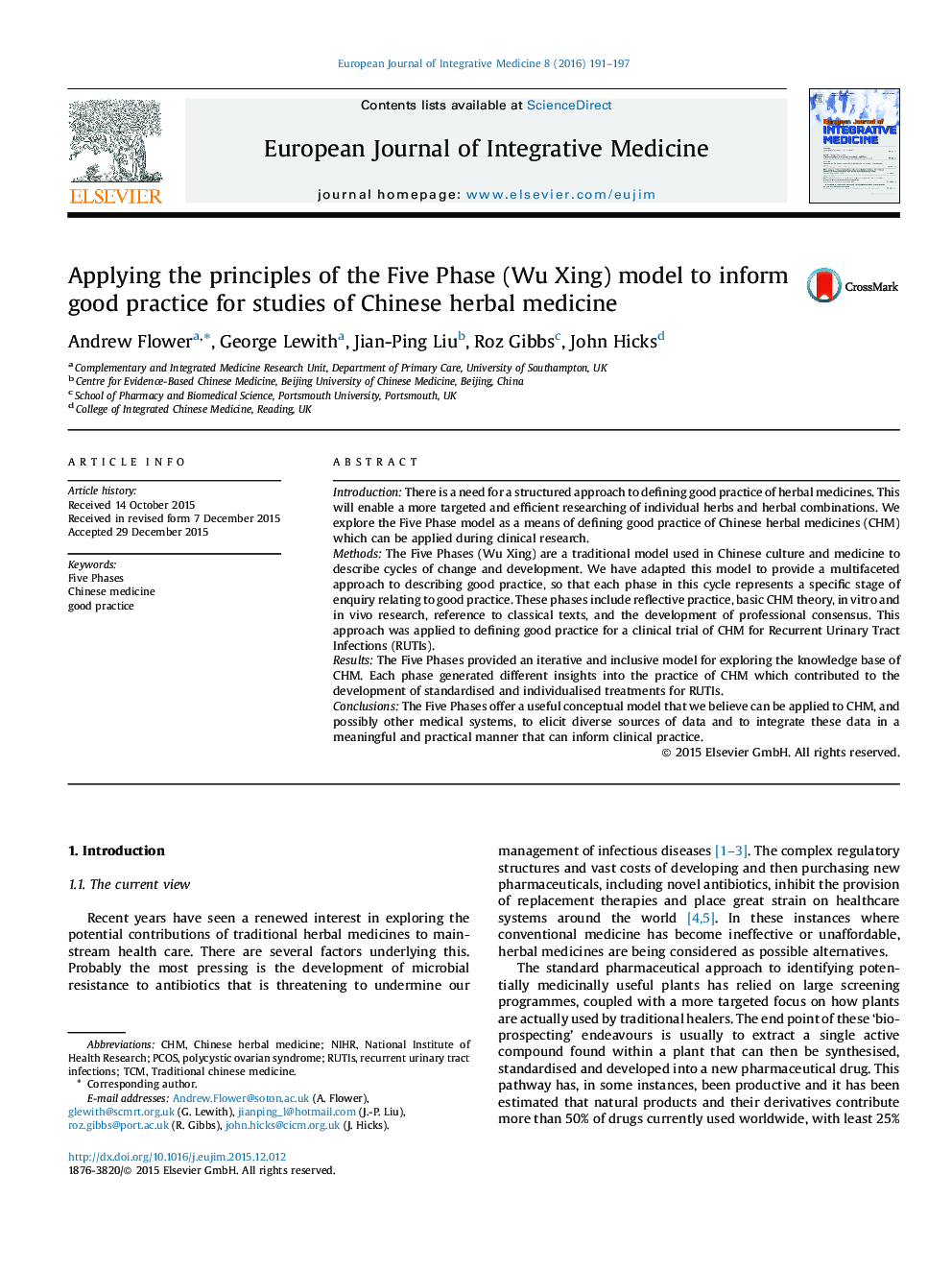| Article ID | Journal | Published Year | Pages | File Type |
|---|---|---|---|---|
| 2479622 | European Journal of Integrative Medicine | 2016 | 7 Pages |
IntroductionThere is a need for a structured approach to defining good practice of herbal medicines. This will enable a more targeted and efficient researching of individual herbs and herbal combinations. We explore the Five Phase model as a means of defining good practice of Chinese herbal medicines (CHM) which can be applied during clinical research.MethodsThe Five Phases (Wu Xing) are a traditional model used in Chinese culture and medicine to describe cycles of change and development. We have adapted this model to provide a multifaceted approach to describing good practice, so that each phase in this cycle represents a specific stage of enquiry relating to good practice. These phases include reflective practice, basic CHM theory, in vitro and in vivo research, reference to classical texts, and the development of professional consensus. This approach was applied to defining good practice for a clinical trial of CHM for Recurrent Urinary Tract Infections (RUTIs).ResultsThe Five Phases provided an iterative and inclusive model for exploring the knowledge base of CHM. Each phase generated different insights into the practice of CHM which contributed to the development of standardised and individualised treatments for RUTIs.Discussion/conclusionsThe Five Phases offer a useful conceptual model that we believe can be applied to CHM, and possibly other medical systems, to elicit diverse sources of data and to integrate these data in a meaningful and practical manner that can inform clinical practice.
